
Visit our community sponsor

Thanks:
0

Likes:
0
-
Research Calibrator

Racelogic Traction Control for the 818...
I mentioned in a few other threads that I thought the RaceLogic Traction Control system would be a good fit for the 818. Rear wheel drive turbocharged cars are always in search of traction. I thought I would share the results of my installation of the RTCS on my 2006 GTO (twin turbocharged)... When I get my 818 and install the EZ30R I'll be using one of these!
[ORIGINAL POSTS]
As anyone with a modified GTO making 400+ lb-ft of wheel torque knows, you never have enough traction. After adding a twin turbo setup to my GTO a few years ago, I have always found to lack of traction to be the biggest limiting fun factor. I have a couple of modified Subarus that I daily drive, and the four wheel traction of those cars makes them effectively faster even with less horsepower (although 475whp and 525whp isnít that much less..). I live in Portland which means more than 50% of the days are rainy, which translates to even worse traction in the high horsepower RWD car.
A few years ago I looked into the RaceLogic traction system and it seemed a perfect fit for the GTO. As all of us GTO owners know putting larger than 275 tires on the rear is difficult, and the stock rear suspension and driveline setup loves to wheel hop itself to pieces. For this thread I am going to focus on the results of installing and testing the Racelogic Traction Control system on my 2006 GTO. In a separate thread (I'll link to it here once I post it up) Iíll dive into the installation details, in great detail.
For those not familiar, the Racelogic traction control system (RTCS) is an aftermarket wire in system that uses the factory ABS wheel speed sensors to detect wheel speed slip conditions. Once slip is detected, the RTCS can sequentially cut fuel to individual fuel injectors (for a complete single combustion cycle) to reduce power. Since it is a pass thru connection system it will only do complete cycle fuel cut, meaning it will never cut only half of a fuel cycle resulting in a lean combustion mixture.
If you have ever worked with traction systems that uses timing retard as the primary method of power reduction, you will quickly discover that that method does not work well on very high horsepower turbocharged or supercharged applications. Reducing timing will reduce power, but in a relatively nonlinear fashion. Throttle closing applications are also difficult to work with as the reduction in throttle while the incoming air pressure is high can result in surging and bucking, as well as slow response to changes.
The RTCS is a single box computer as well as a cabin installable controller. Here it is compared to a factory ECU.
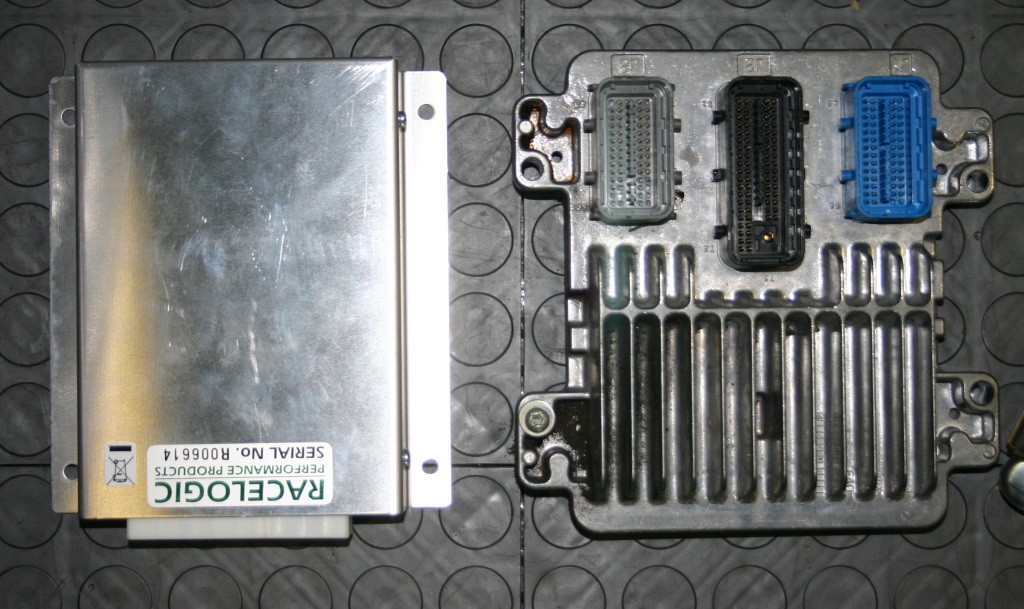
RTCS sitting next to my factory ECU.
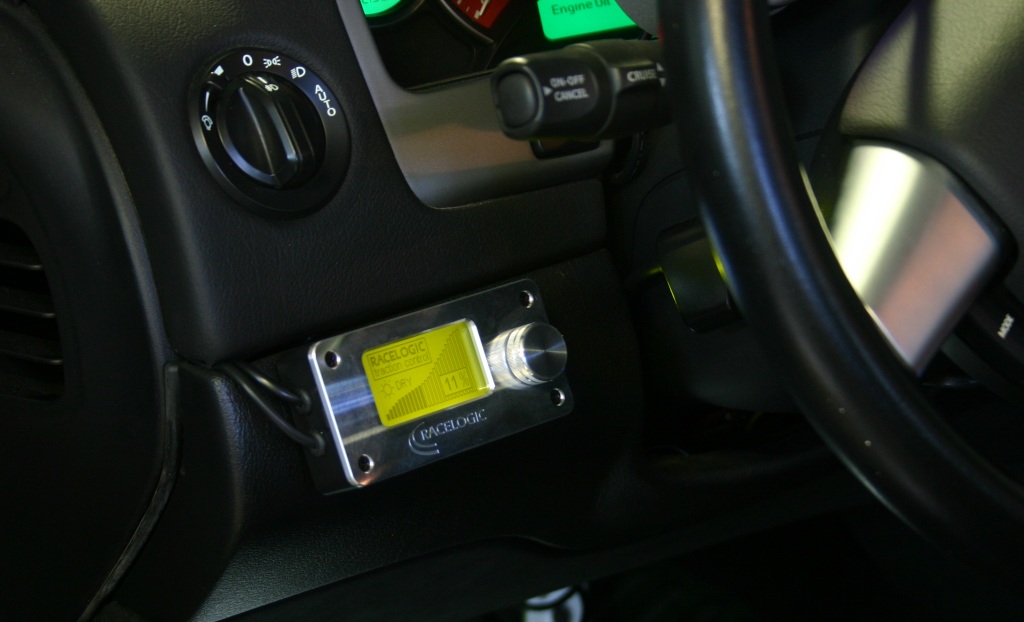
In cabin installed digital adjuster module.
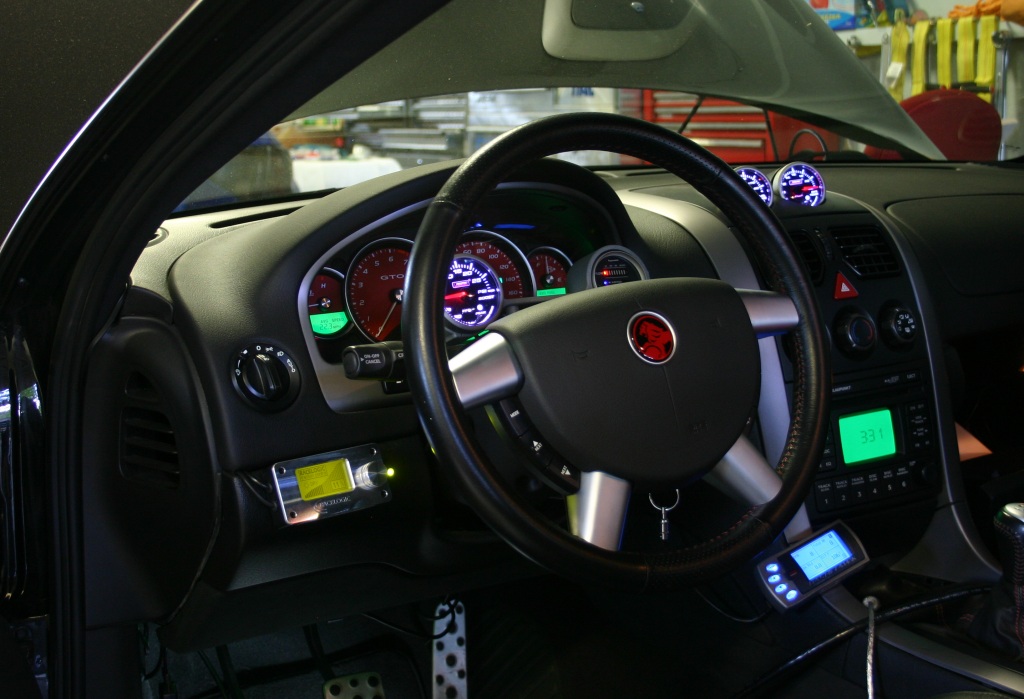
I found the spot to the left of the drivers wheel to be an easy place to access and see.
The first and most obvious question is: Does it work? The answer; Yes, and really really really well. I had a guess that it would work, but I had no idea it would work this well. Driving the car now is significantly more fun, faster, and safer than before. I have driven with the system in both the rain and dry and I would not want a high horsepower RWD car without it. (well, that or a really great factory system).
I think data speaks better than opinions, so let's dig in!
First, let's take a look at front and rear wheel speeds in a 2nd gear pull in my car with no traction control.

In the above graph you can see the absolute wheel speed of the front and rear wheels during a 2nd gear pull on a flat smooth dry road surface. As you can see, there is SIGNIFICANT wheel slip. At the end of the pull the front wheels are going 53MPH and the rear wheels are going 70MPH. This of course means that the car will be yawing sideways before snapping back into traction when you push in the clutch. Once you clutch-in, the rear wheels will almost instantly snap back to 53MPH. If not driven with care, that is how you swap ends at 50+MPH. For those that are curious that is a bit over 25% wheel slip.
Now with the RTCS engaged (on the WET setting), you get this:
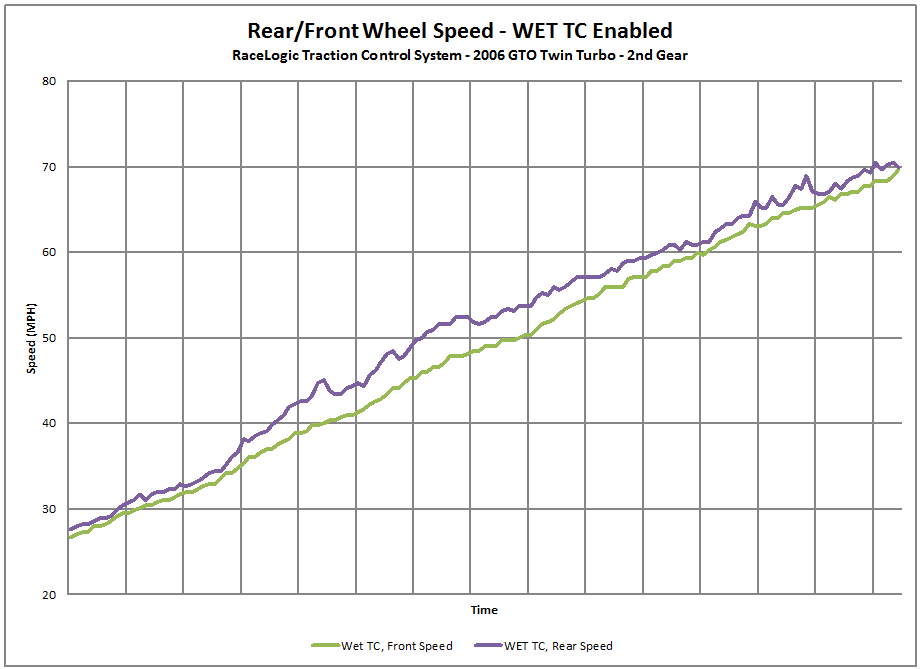
There is obviously significantly less wheel spin, and when you reach redline 2nd gear the rear wheels are going almost the exact same speed as the front.
In talking about traction control, the percentage of driven to reference wheel slip is the key measurement. Here is a graph of the front to rear wheel slip percentages for my car with NO TC, 10% TC, 5% TC, and WET TC modes.
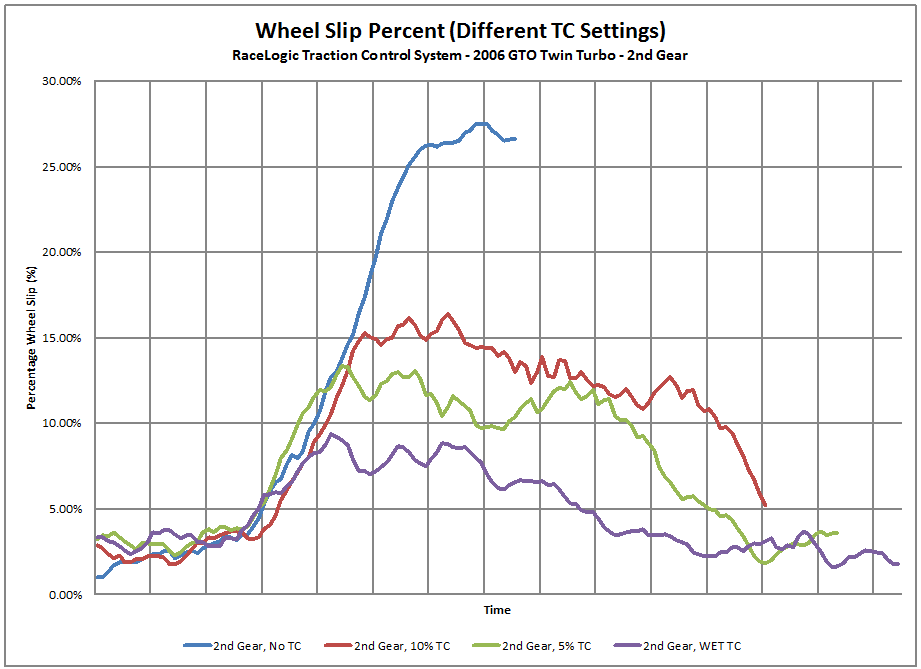
Here you can see how the different settings in the TC system (selected with the in cabin dial) effect the resulting wheel spin. The uncontrolled NO TC wheel spin terminates much sooner then the other pulls because the car hits redline in 2nd gear long before the car really gets to the equilivilent speed. The 10% and 5% figures, according to the manual, represent the additional slip allowed over the configurable staring slip control. In my case that starting slip is 5%, so the 10% TC setting should allow approximately 15% slip, and the 5% TC setting should allow approximately 10% slip. Indeed the slip numbers are close, but not perfect to the target values.
I'll note here that the RTCS has a great Windows software interface that allows complete adjustability over the TC process. You can control how and to what rate fuel is cut as well as adjust what slip profiles need what levels of traction adjustment. I am using the stock options and they worked surprisingly well.
 Posting Permissions
Posting Permissions
- You may not post new threads
- You may not post replies
- You may not post attachments
- You may not edit your posts
-
Forum Rules

Visit our community sponsor




 Thanks:
Thanks:  Likes:
Likes: 










 Reply With Quote
Reply With Quote